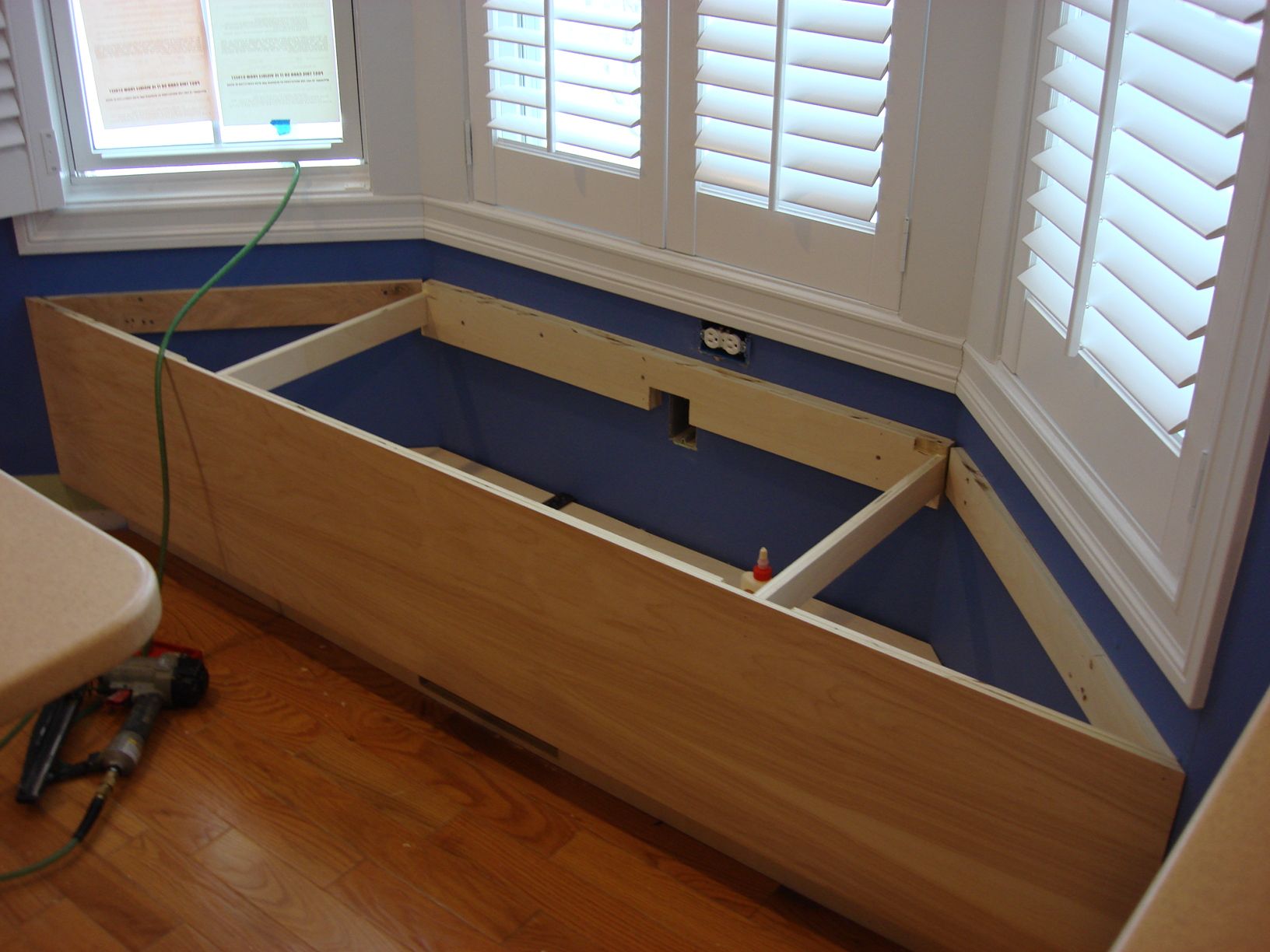Home>diy>Building & Construction>How To Put A Lien On A Construction Project


Building & Construction
How To Put A Lien On A Construction Project
Modified: December 7, 2023
Learn how to put a lien on a construction project for building and construction projects. Protect your rights and get paid what you are owed.
(Many of the links in this article redirect to a specific reviewed product. Your purchase of these products through affiliate links helps to generate commission for Storables.com, at no extra cost. Learn more)
Introduction
Putting a lien on a construction project is a legal process that allows contractors, suppliers, and other parties involved in a construction project to protect their interests and secure payment for the work they have done or the materials they have provided. If you are involved in the construction industry, it is essential to understand how liens work and how to properly file them.
A lien is a legal claim against a property that gives the claimant the right to seek payment for the work or materials supplied. In the construction industry, a lien is typically filed when a contractor or supplier has not been paid for their services or materials. By putting a lien on a construction project, these parties can assert their right to payment and potentially force the property owner to settle the outstanding debt.
Understanding the lien process is crucial for any construction professional. Whether you are a contractor, subcontractor, supplier, or even a property owner involved in a construction project, knowing when and how to file a lien can assist you in resolving payment disputes and securing the compensation you deserve.
In this article, we will delve into the details of how to put a lien on a construction project. We will explore the reasons why it may be necessary to file a lien, the steps involved in the process, the required documentation, and the timelines and deadlines to be aware of. By the end of this article, you will have a comprehensive understanding of the lien process and be equipped to take the necessary steps to protect your interests in any construction project.
Key Takeaways:
- Filing a construction lien is a powerful tool for contractors and suppliers to secure payment, but it requires understanding legal requirements, gathering documentation, and adhering to specific timelines and deadlines.
- Serving notice to other parties involved in the construction project is crucial when filing a lien, as it creates transparency, opens lines of communication, and strengthens your position.
Read more: How To Put A Construction Lien On A Property
Understanding Liens on Construction Projects
Liens play a significant role in the construction industry, serving as a legal mechanism to ensure that contractors, subcontractors, and suppliers receive payment for their work. When a construction project is completed, there may be instances where payment disputes arise or when a party fails to fulfill their financial obligations.
A construction lien provides a way for unpaid parties to assert their claim on the property. This claim can potentially allow them to recover the amount owed for their services, labor, or materials provided. It is important to note that liens vary by jurisdiction, and the specific requirements and procedures may differ depending on the location of the construction project.
In essence, a construction lien gives the claimant a security interest in the property. This interest ensures that the property cannot be sold or transferred without settling the outstanding debt owed to the claimant. The lien effectively creates a cloud on the property’s title, making it difficult for the property owner to sell or refinance until the lien is resolved.
Construction liens are typically filed against the property rather than against individuals or companies. This means that even if the owner of the property changes during the construction process, the lien is still valid and enforceable against the new owner.
It is important to understand that filing a lien is not a guarantee of payment. Rather, it is a legal tool that creates an avenue for the claimant to pursue their owed compensation. In many cases, the filing of a lien can prompt negotiations and discussions between the parties involved, leading to a resolution and the release of the lien.
It is worth noting that the rules and regulations surrounding construction liens can be complex and may require the assistance of a legal professional to navigate. Each jurisdiction has specific laws and procedures that must be followed. Therefore, it is essential to familiarize yourself with the relevant laws and regulations in your jurisdiction to ensure the proper filing and enforcement of a construction lien.
Next, we will discuss the reasons why it may be necessary to file a lien on a construction project.
Reasons to File a Lien
Filing a lien on a construction project is a serious step that should not be taken lightly. However, there are several situations where it may be necessary or advisable to file a lien to protect your interests and ensure payment for the work you have done or the materials you have provided. Here are some common reasons why filing a lien may be necessary:
- Non-payment: Perhaps the most common reason for filing a lien is non-payment. If you have completed the work or supplied the materials as agreed upon in the contract, but have not received the payment you are owed, putting a lien on the construction project can help you assert your claim and motivate the property owner to resolve the outstanding debt.
- Payment disputes: In some cases, there may be a disagreement or dispute regarding the amount owed or the quality of the work performed. Filing a lien can provide leverage in negotiations and encourage the parties involved to come to a resolution.
- Breach of contract: If the other party has breached the terms of the contract, such as failing to provide necessary documents or delaying payments beyond the agreed-upon terms, filing a lien can be a way to enforce your rights and seek appropriate compensation.
- Unfulfilled change orders: Change orders are modifications to the original contract that may involve additional work or materials. If you have performed extra work or provided additional materials as per approved change orders, and you have not been compensated accordingly, filing a lien can help protect your right to payment for these change orders.
- Insolvency or bankruptcy: If the party responsible for payment, such as the property owner or the general contractor, becomes insolvent or declares bankruptcy, filing a lien can help secure your position as a creditor and increase the chances of recovering the funds owed to you.
- Protecting lien rights: Even if you have not encountered payment issues yet, filing a lien can be a preventive measure to secure your lien rights. By filing a lien within the specified timeframe, you ensure your claim is protected and have a better chance of getting paid in case any payment issues arise later on.
It is important to note that while filing a lien can be a powerful tool for securing payment and asserting your rights, it should be approached cautiously. Before filing a lien, it is essential to understand the legal requirements and follow the proper procedures to ensure its validity and enforceability.
In the next section, we will discuss the steps involved in putting a lien on a construction project.
Steps to Put a Lien on a Construction Project
If you find yourself in a situation where filing a lien is necessary to protect your interests and seek payment for your work, it is important to follow the proper steps to ensure the validity and enforceability of the lien. Here are the general steps involved in putting a lien on a construction project:
- Understand the legal requirements: Familiarize yourself with the lien laws and regulations specific to your jurisdiction. Each state or province may have different requirements regarding deadlines, notice requirements, and documentation. Consult legal professionals or resources specializing in construction liens to ensure you have a thorough understanding of the legal framework.
- Notify the property owner: In some jurisdictions, it may be required to provide the property owner with a preliminary notice or notice of intent to file a lien before actually filing the lien. This notice serves as a warning or opportunity for the property owner to address the payment issue and potentially avoid the lien.
- Prepare the necessary documentation: Gather all relevant documents related to the construction project, such as contracts, invoices, change orders, and any other evidence supporting your claim for payment. These documents will be crucial in proving your entitlement to file a lien and the amount owed.
- Prepare the lien claim: Draft the lien claim document, also known as a claim of lien or mechanics lien. This document typically includes information such as the names and addresses of the parties involved, a description of the work performed or materials supplied, the amount owed, and any other required information according to local laws. Ensure the lien claim is accurate, clear, and includes all required details.
- File the lien claim: Submit the lien claim to the appropriate office or authority responsible for recording liens in your jurisdiction. This may be a county recorder’s office or a similar governmental entity. Follow the filing instructions carefully, pay any required filing fees, and make sure to meet the filing deadlines specified by your jurisdiction.
- Serve notice to other parties: In some cases, it may be necessary to serve a copy of the lien claim to other parties involved in the construction project, such as the general contractor, subcontractors, or lenders. This notice serves to inform them of the lien claim and their potential liability. Check the specific requirements for serving notices in your jurisdiction.
- Enforce the lien: If the payment issue remains unresolved after filing the lien claim, you may need to take further legal action to enforce the lien. This may involve initiating a lawsuit or participating in alternative dispute resolution methods to seek a judgment or agreement for payment.
It is crucial to consult with legal professionals or experts in construction lien law to ensure you follow the appropriate steps and meet all the necessary requirements in your jurisdiction. By doing so, you can enhance your chances of successfully putting a lien on a construction project and seeking the payment you are owed.
In the next section, we will discuss the documentation required to put a lien on a construction project.
Required Documentation
When putting a lien on a construction project, it is essential to gather and prepare the necessary documentation to support your claim. The specific documents required may vary depending on your jurisdiction, but here are some common types of documentation needed to file a construction lien:
- Contract documents: Collect copies of the contracts or agreements related to the construction project. These documents should outline the scope of work, the payment terms, and any other relevant details regarding the project.
- Invoices and payment records: Keep records of all invoices and payment receipts relating to the project. These documents demonstrate the work performed or materials supplied and the corresponding payments received or outstanding.
- Change orders: If there were any changes to the original contract, such as additional work or extra materials provided, gather all change order documents. These documents should clearly outline the modifications made and any additional costs incurred as a result.
- Notice and communication records: Maintain copies of any notices, emails, letters, or other communication exchanged between you and the other parties involved in the construction project. This includes any correspondence regarding payment issues, disputes, or attempts to resolve the matter.
- Proof of delivery: If you supplied materials for the project, keep records of the delivery receipts or proof of shipment. This demonstrates that the materials were provided as agreed upon.
- Proof of work: For contractors or subcontractors, document the progress of the work performed. This can include photographs, work logs, or other evidence that shows the completion of the work in accordance with the contract.
- Property information: Gather details about the property where the construction work took place, such as the legal description, address, and the names and contact information of the property owner or owners.
- Notice of intent: In some jurisdictions, it may be required to provide a preliminary notice or notice of intent to file a lien before actually filing the lien claim. Keep a record of any such notices sent to the property owner or other parties.
It is crucial to maintain accurate and organized documentation throughout the construction project to support your claim for payment. By having the necessary documentation readily available, you can strengthen your case when filing a lien and increase the likelihood of a successful resolution.
Be sure to consult with legal professionals or experts in construction lien law to ensure you are aware of any specific documentation requirements in your jurisdiction.
In the next section, we will discuss the timelines and deadlines for filing a construction lien.
Before putting a lien on a construction project, make sure to follow the specific legal requirements in your area. This may include filing deadlines, notice requirements, and documentation.
Read more: What Is A Lien In Construction
Timelines and Deadlines for Filing
When it comes to filing a construction lien, it is crucial to adhere to specific timelines and deadlines set by the law of your jurisdiction. Failure to meet these deadlines may result in the loss of your right to file a lien or render your lien claim invalid. Here are some important considerations regarding timelines and deadlines for filing a construction lien:
1. Notice of intent: In some jurisdictions, you may be required to provide a preliminary notice or notice of intent to file a lien before actually filing the lien claim. This notice alerts the property owner and other relevant parties of your intention to seek a lien if payment is not received. The deadline for serving this notice varies by jurisdiction, but it is typically within a certain number of days from the last date of work or the last delivery of materials.
2. Lien filing deadline: Each jurisdiction has a specific deadline for filing a construction lien. This deadline is typically measured from the last date of work or the last delivery of materials. It is crucial to determine this deadline accurately and ensure that your lien claim is filed before it expires. Failure to meet the filing deadline may result in the loss of your right to file a lien.
3. Serve copy of lien claim: In addition to filing the lien claim with the appropriate authority, some jurisdictions require you to serve a copy of the lien claim on the property owner and other relevant parties. The deadline for serving the copy of the lien claim varies by jurisdiction and is typically within a certain number of days from the date of filing the lien claim.
4. Initiate legal action: If the payment issue remains unresolved after filing the lien claim, you may need to initiate legal action to enforce the lien. It is important to be aware of any applicable deadlines for filing a lawsuit or pursuing alternative dispute resolution methods. These deadlines may vary depending on the jurisdiction and the specific circumstances of the case.
It is crucial to consult legal professionals or experts in construction lien law to ensure you are aware of and comply with the specific timelines and deadlines in your jurisdiction. Failure to meet these deadlines may jeopardize your ability to file a lien or enforce your rights.
In the next section, we will discuss the importance of serving notice to other parties involved in the construction project.
Serving Notice to Other Parties
When filing a construction lien, it is important to serve notice to other parties involved in the construction project beyond just filing the lien claim itself. This notice informs these parties that a lien has been filed and alerts them to their potential liability. Here are the key points to consider when serving notice to other parties:
- General contractor: If you are a subcontractor or supplier, it is crucial to serve notice to the general contractor. This ensures that they are aware of the lien claim and can take necessary actions to resolve the payment issue. In some jurisdictions, failure to serve notice to the general contractor may limit your ability to enforce the lien against the property.
- Subcontractors and suppliers: In certain jurisdictions, it may be necessary to serve notice to other subcontractors or suppliers involved in the project. This ensures that they are aware of the lien claim and can assess their potential liability.
- Property owner: Serving notice to the property owner is typically required in most jurisdictions. This notifies the owner that a lien has been filed against their property and alerts them to the potential consequences, such as the cloud on the title and potential legal actions to enforce the lien.
- Lenders or financing institutions: Depending on the circumstances and the laws of the jurisdiction, it may be necessary to serve notice to any lenders or financing institutions involved in the construction project. This ensures that they are aware of the lien claim and can take appropriate measures to protect their interests.
It is important to note that each jurisdiction may have specific requirements regarding how notice should be served and the timeframe within which it must be done. Common methods of serving notice include certified mail, personal delivery, or other means of formal written communication. Be sure to follow the prescribed methods and keep detailed records of the notice sent and received.
Serving notice to other parties involved in the construction project is essential for two main reasons. Firstly, it helps create a transparent and open line of communication, giving all parties involved an opportunity to address and resolve the payment issue before resorting to legal action. Secondly, it ensures that all relevant parties are aware of the lien claim, making it more difficult for them to claim ignorance and potentially strengthening your position.
Always consult with legal professionals or experts in construction lien law to ensure you understand the specific notice requirements in your jurisdiction and fulfill them accordingly.
In the next section, we will discuss how to enforce a construction lien once it has been filed.
Enforcing the Lien
Once you have filed a construction lien and have not received the payment you are owed, you may need to take further legal action to enforce the lien. Enforcing the lien involves pursuing legal remedies to compel the property owner to address the outstanding debt. Here are some steps to consider when enforcing a construction lien:
- Review your options: Consult legal professionals or experts in construction lien law to understand the available options for enforcing the lien in your jurisdiction. This may include filing a lawsuit, pursuing alternative dispute resolution methods, or seeking the involvement of a collections agency.
- Prepare your case: Gather and organize all relevant documents, such as contracts, invoices, payment records, notices, and any correspondence related to the payment issue. These documents will be essential in building your case and demonstrating your entitlement to the payment.
- Consider negotiations and settlement: Before proceeding with legal action, it may be beneficial to engage in negotiations or settlement discussions with the other parties involved. This can potentially lead to a resolution and the release of the lien without the need for litigation.
- Initiate legal action: If negotiations or settlement discussions are unsuccessful, you may need to initiate legal action to enforce the lien. This typically involves filing a lawsuit in the appropriate court, stating your claim for payment and requesting a judgment in your favor.
- Attend hearings and trial: If a lawsuit is filed, you will likely need to attend hearings and potentially a trial to present your case. Be prepared to present evidence, testimonies, and arguments to support your claim.
- Obtain a judgment: If the court rules in your favor, you will obtain a judgment confirming your right to payment and potentially granting you the authority to foreclose on the property to satisfy the debt. The judgment can be used to enforce the lien and compel the property owner to settle the outstanding amount.
- Explore collection methods: If obtaining a judgment does not result in payment, you may need to explore collection methods, such as garnishing wages, seizing assets, or placing a levy on the property to satisfy the debt.
Enforcing a construction lien can be a complex and time-consuming process, requiring legal expertise and guidance. It is crucial to consult with legal professionals who specialize in construction lien law to ensure you understand the specific procedures and requirements in your jurisdiction.
Remember, the enforcement of a lien is aimed at securing the payment you are owed for the work you have done or the materials you have provided. By taking the necessary legal steps, you increase the chances of recovering the outstanding debt and protecting your interests in the construction project.
In the final section, we will provide some concluding thoughts about the process of putting a lien on a construction project.
Final Thoughts
Putting a lien on a construction project is a legal process that allows contractors, subcontractors, suppliers, and other parties in the construction industry to protect their interests and seek payment for their work. It is a powerful tool that can ensure you receive the compensation you deserve for the services you provided or the materials you supplied.
However, filing a lien should not be taken lightly. It is a serious step that involves understanding the legal requirements, gathering the necessary documentation, and adhering to specific timelines and deadlines in your jurisdiction. Consulting with legal professionals who specialize in construction lien law is crucial to navigate the process successfully.
When considering filing a lien, it is important to assess the situation carefully and evaluate alternative options for resolution. Initiating negotiations or settlement discussions can often lead to a mutually acceptable agreement without the need for litigation. However, if negotiations prove unsuccessful, enforcing the lien through legal action may be necessary to protect your rights.
Remember to maintain accurate and organized documentation throughout the construction project. This includes contracts, invoices, change orders, notices, and any communication regarding the payment issue. These documents play a critical role in supporting your claim and demonstrating your entitlement to file a lien.
Keep in mind that each jurisdiction may have specific requirements and procedures regarding liens. Familiarize yourself with the laws and regulations in your area to ensure compliance and maximize your chances of success.
Finally, always seek professional advice before proceeding with filing a lien or enforcing it. Legal professionals can provide guidance tailored to your specific circumstances and contribute to a smoother process.
By understanding the lien process, preparing the necessary documentation, and following the proper procedures, you can assert your rights, protect your interests, and seek the payment you are owed on a construction project.
Frequently Asked Questions about How To Put A Lien On A Construction Project
Was this page helpful?
At Storables.com, we guarantee accurate and reliable information. Our content, validated by Expert Board Contributors, is crafted following stringent Editorial Policies. We're committed to providing you with well-researched, expert-backed insights for all your informational needs.















0 thoughts on “How To Put A Lien On A Construction Project”